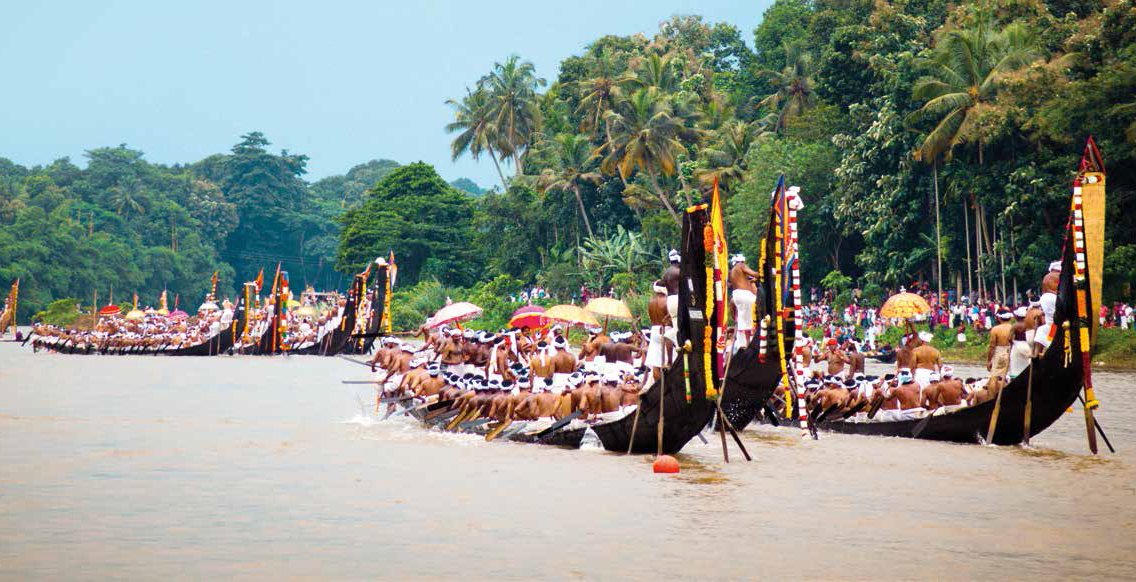Onam - Savouring The Best of Kerala
Text: Major General Jacob Tharakan Chacko, SM (Retd)
Pictures: Gokul Ramachandran,Syam Sathyan,Vinil TV & Prashant Kumar KP
God’s own country is a tourist’s dream destination. Unlike other tourist destinations, Kerala, does not limit visitors with “seasons”. Every season here is tourist season and Kerala offers something worthwhile depending upon, what one is looking for. Awash in green after lavish monsoons,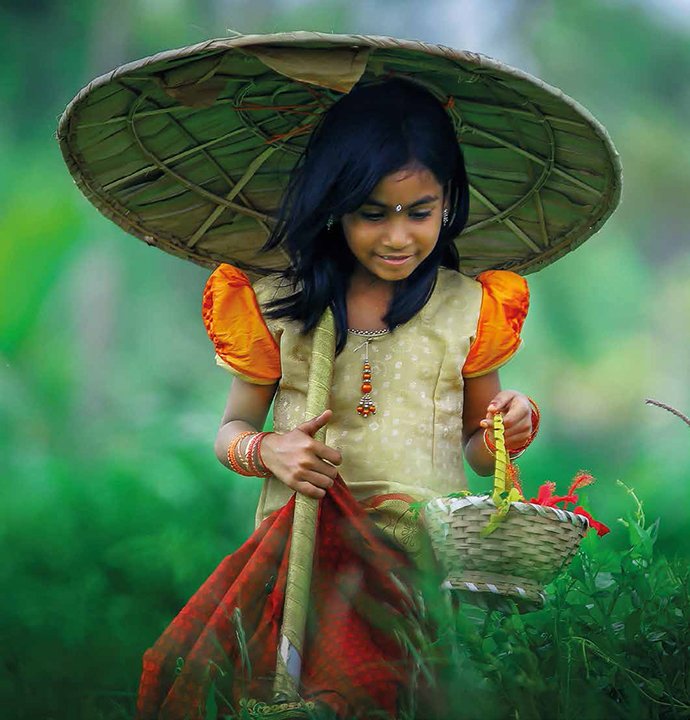 Kerala is at its pristine best in August. This is often marketed as the beginning of the tourist season thatst retches well into March, when the summer starts. Onam, the festival unique to Kerala, normally falls in the August–September period. It is celebrated all over the state with gaiety and colour and showcases local art, culture and traditions. Though its origins are deep rooted in Hindu beliefs, Onam is celebrated by Malayalees all over the world, beyond religions and socio-political divides, making it a truly unifying experience. Though events and traditions associated with nam mayvary from place to place, each one is spectacular in its own right. For an explorer, the difficulty is in making the choice, for thre is so much to choose from.
Kerala is at its pristine best in August. This is often marketed as the beginning of the tourist season thatst retches well into March, when the summer starts. Onam, the festival unique to Kerala, normally falls in the August–September period. It is celebrated all over the state with gaiety and colour and showcases local art, culture and traditions. Though its origins are deep rooted in Hindu beliefs, Onam is celebrated by Malayalees all over the world, beyond religions and socio-political divides, making it a truly unifying experience. Though events and traditions associated with nam mayvary from place to place, each one is spectacular in its own right. For an explorer, the difficulty is in making the choice, for thre is so much to choose from.
The Legend
According to the legend, Emperor Mahabali ruled Kerala in a manner that Heavens became envious. All the Gods then approached Lord Vishnu to do the needful. One day, as The Emperorfinished his prayers, Lord Vishnu appeared as Vamana (Dwarf), and asked for alms. Kindness personified, the ruler permitted the dwarf to ask anything he wanted. Vamana asked just for three feet of land to stand and pray. The Emperor readily agreed. He immediately grew up, big enough to measure the whole universe in two steps and asked for place to keep the third step. The Emperor, true to his word, bowed down and showed his head.Vamana, with his feet drove down the Emperor into the netherworld. However, before he went down, Emperor Mahabali secured the rights to visit his subjects every year. Malayalees irrespective of cast, creed, faith and place they are at, welcome their beloved Emperor, believed to be visiting his empire during Onam.
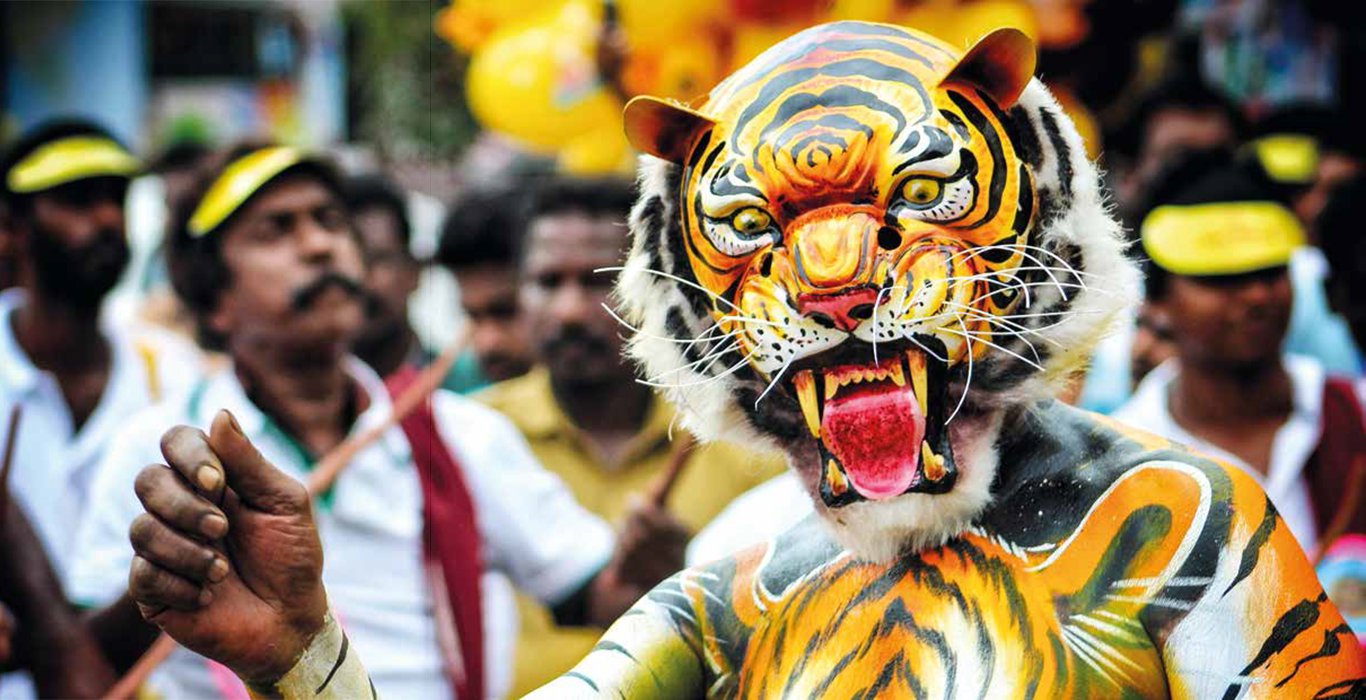
Onam Activities
Visitors, associate “Sadya” (The feast) and “Vallam Kali” (Boat Race), with Onam. Beyond these, two well-advertised events, there are many traditional events associated with Onam. The prominent ones, to name a few, are “Athachamayam”, “Kummattikali”, “Ona–Thallu”, “Pakida-kali” “Pookkalam”, “Puli-Kali”, “Thiruvathira Kali”, “Thumbi- Thullal” and “Uri-Adi”. Over a period of time, these events have evolved as local and regional competitions, sponsored and funded for commercial gains. Atha-Chamayam: “Atha-Chamayam” literally means “decking up-on Atham”, Atham being the first of the Onam Activities ten- day onam period. This event formally marks the commencement of onam festivities. Across the state, on Atham day, people create intricate floral arrangements in front of their houses or courtyards to welcome Mahabali. This practice continues for the next ten days. Traditionally, “Oonjaal” (swing) is also installed on Atham. Athachamayam is celebrated on a grand scale at Thripunithara,not very far away from Kochi. The colourful ceremony is a curtain raiser to the ensuing mega celebrations.
The origins of this event go back to the times of Kochi Royalty. Those days the King himself, in all his royal pomp, took part in the procession accompanied by the Christian priest of the Karingachira church, the Maulavi from Nettur mosque and the village elder to represent the fisher community. The event has evolved into a cultural feast under the stewardship of the local municipal Council. This is one event that a tourist with interests in traditional
art forms must never miss. Almost all forms of traditional folk art are on display during this function. Feast to the eyes, Athachamayam is a window to the rich heritage of the most literate state of India.
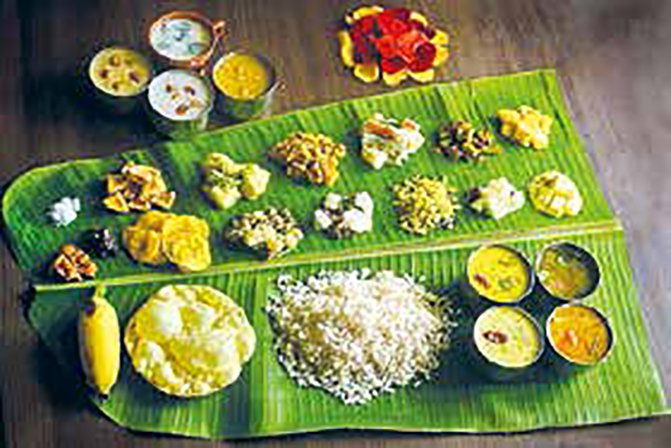 “Sadya” (The Feast): Traditionally, “Sadya” is a two-course vegetarian lunch consisting, normally of about 24 dishes served on a banana leaf. At places, the number could swell to 64. However,all dishes can be clubbed under 3 major heads, “Choru” (Boiled Rice), “Koottan” (Add-ons) and “Madhuram” (Deserts). The first course is an endless supply of boiled rice served along with an amazing range of traditional vegetarian dishes making up the phenomenal numbers to fill the entire banana leaf. These dishes are collectively called “Koottan”. “Madhuram” consists of an endless supply of “Payasams”, normally three varieties which could go up to as much as seven. The traditional sadya is a family affair, where family members sit together on the mats laid on the floor and partake the sumptuous lunch. The lunch is traditionally served first to the males and children of the house, followed by the women folk sitting together to eat. The interesting part of the feast besides the number of items on the banana leaf is a manner in which the banana leaf is laid on the ground and the specific location assigned to each item being served. Interestingly, table salt is also one item of the menu. Though one may use the salt if required, the traditionally intended purpose is to keep the evil eye away from the household. In some households, one leaf with all the ingredients is kept near a lighted lamp. Depending upon the family belief, it could either be for the departed souls, Emperor Mahabali, the unseen guest. Some households also serve it as an offering to Ganapati, the Hindu God. In some houses this offering may be just a pinch of salt on the banana leaf as salt is central to existence and thus symbolising offering everything to God.Although almost all hotels and restaurants across Kerala serve sadya during onam, “Homestays” may be a better destination for more authentic sadya. However, if one has a Malayalee friend, an opportunity to be at his or her place on “Thiru-onam” for lunch must never be lost. Besides enjoying the traditional Malayalee hospitality, sitting next to the family elder, one can partake in a lunch of a lifetime.
“Sadya” (The Feast): Traditionally, “Sadya” is a two-course vegetarian lunch consisting, normally of about 24 dishes served on a banana leaf. At places, the number could swell to 64. However,all dishes can be clubbed under 3 major heads, “Choru” (Boiled Rice), “Koottan” (Add-ons) and “Madhuram” (Deserts). The first course is an endless supply of boiled rice served along with an amazing range of traditional vegetarian dishes making up the phenomenal numbers to fill the entire banana leaf. These dishes are collectively called “Koottan”. “Madhuram” consists of an endless supply of “Payasams”, normally three varieties which could go up to as much as seven. The traditional sadya is a family affair, where family members sit together on the mats laid on the floor and partake the sumptuous lunch. The lunch is traditionally served first to the males and children of the house, followed by the women folk sitting together to eat. The interesting part of the feast besides the number of items on the banana leaf is a manner in which the banana leaf is laid on the ground and the specific location assigned to each item being served. Interestingly, table salt is also one item of the menu. Though one may use the salt if required, the traditionally intended purpose is to keep the evil eye away from the household. In some households, one leaf with all the ingredients is kept near a lighted lamp. Depending upon the family belief, it could either be for the departed souls, Emperor Mahabali, the unseen guest. Some households also serve it as an offering to Ganapati, the Hindu God. In some houses this offering may be just a pinch of salt on the banana leaf as salt is central to existence and thus symbolising offering everything to God.Although almost all hotels and restaurants across Kerala serve sadya during onam, “Homestays” may be a better destination for more authentic sadya. However, if one has a Malayalee friend, an opportunity to be at his or her place on “Thiru-onam” for lunch must never be lost. Besides enjoying the traditional Malayalee hospitality, sitting next to the family elder, one can partake in a lunch of a lifetime.
Vallam Kali (Boat Race): While boat racing exists all over the world, the ones in Kerala are spectacularly different. Kerala is a land of backwaters, rivers and lakes that host boat races of various kinds. Out of all such races, the ones that have captured international fame are Nehru Trophy at Alleppey, Aranmula , Champakulam and Payippad. Each of these boat races is associated with a legend that locals hold in great reverence. While some of the races may be linked directly to onam, others are conducted based on the Malayalam calendar. Widely publicised, heavily subscribed, and fiercely contested, these races are unique to Kerala. In fact, beats of countless drums and songs and cheering spectators become part of the crescendo that fuels the contestants. The experience of being part of the spectators’ gallery is itself exhilarating and worth treasuring.
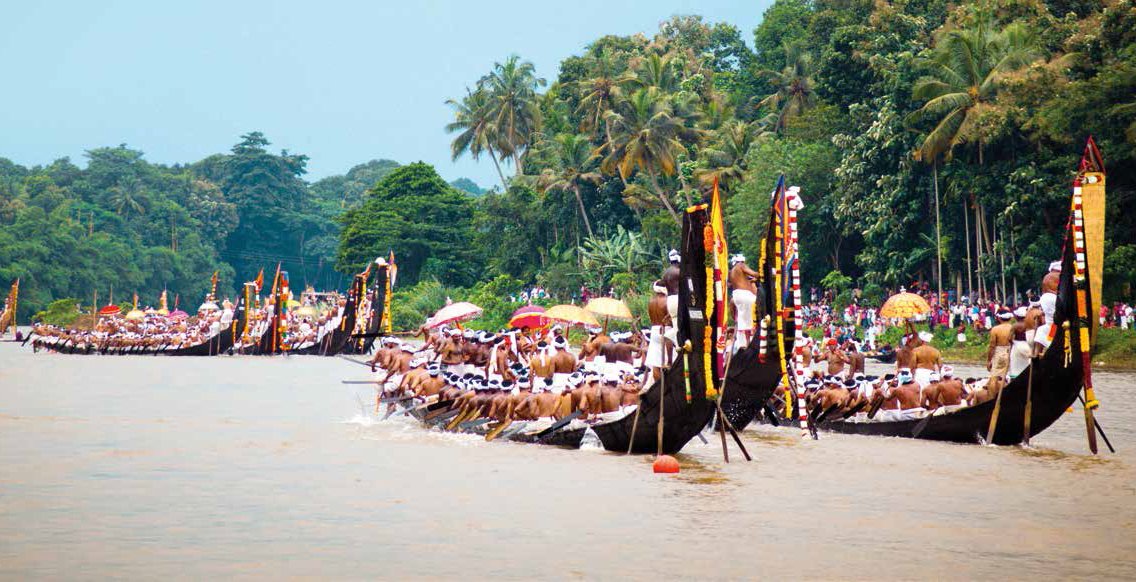
“Kummattikali”: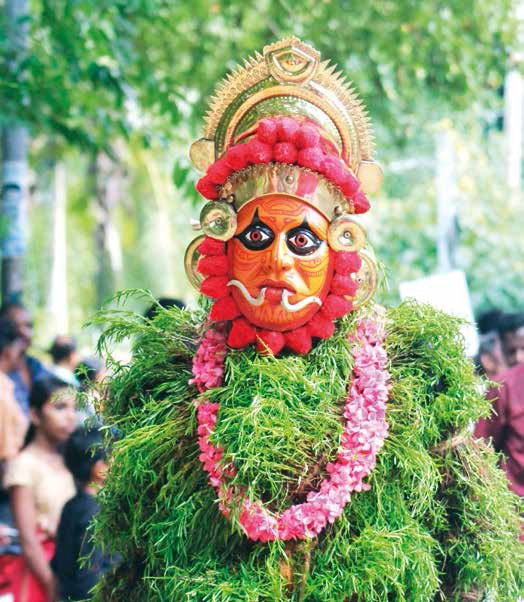
A traditional form of dance, mostly prevalent in the northern districts of Kerala is performed by individuals wearing colourful painted wooden masks and skirts made out of grass and leaves. Performances are based on recitals from Hindu mythology like Ramayana, Mahabharata or even local folklore. Dancers perform to the beats of the “Ona-Villu”, a locally made bow -like instrument, the string of which is strummed upon to make a rhythm. Kummattikali is a freeflowing art form and artists can be seen performing in front of houses or even street corners. Being present in Kerala at the time of onam provides the visitor with a fair chance of seeing this performance more than once.
Thiruvathira Kali:
(Dance on Thiruvathira Day). This is an elegant form of dance normally performed by ladies. This traditional art form, devoid of “Bhavas and Mudras” inherent to other forms of dance, is characterised by beautiful, gentle harmonious body movements accompanied by claps that set the rhythm for the performance. The graceful performance would normally have participants themselves reciting lyrics that are taken from Hindu mythology, songs in praise of Mahabali or a local folklore. Also known as “Kai-kotti Kali” (“Kai-Kottu”, means claps and “Kali” means Dance), this dance is traditionally staged during onam. Participants are normally attired in the traditional “Mundu” (Dhoti) and “Neriyathu” (The upper piece) with their hair adorned with jasmine flowers. They dance around the “Pookkalam” (Floral Arrangement) at the center of which, is the traditional lamp called “Nila Vilakku”. Pookkalam, is an intricate floral arrangement laid out, afresh every day, either in the courtyard or any other prominent place, to welcome Mahabali. In some places especially North Kerala, there is a custom of keeping a vessel filled with water in the Pookkalam and at the end of the day, as the flowers are removed, the water is poured back into the well. It is believed that on any one out of the thirty days, the water would be divinely transformed into “Amrit”, the nectar of life. Captivating, this is one performance that the tourist must seek out to enjoy.
Uniqueness of Onam
Onam is celebrated by Malayalees all over the world, beyond religions and socio-political divides, making it a truly unifying experience. Though events and traditions associated with Onam may vary from place to place, each one is spectacular in its own right. For an explorer,the difficulty is in making the choice, for there is so much to choose from.
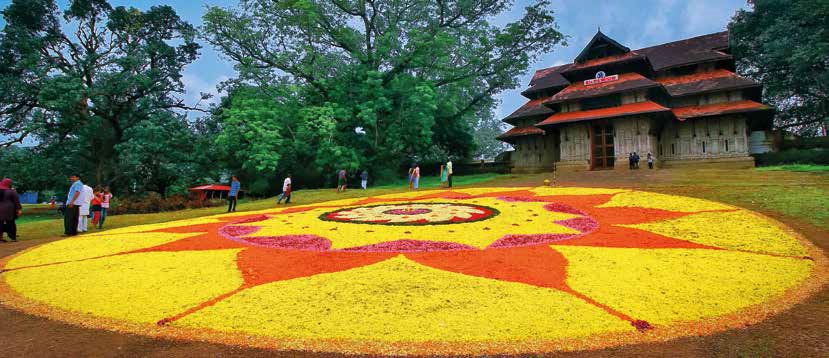
Though its origins are deep rooted in Hindu beliefs, Onam is celebrated by Malayalees all over the world, beyond religions and socio-political divides, making it a truly unifying experience.
Ona–Thallu: Also known as “Avittam- Thallu” (“Avittam” is a day that follows Onam, and “Thallu” means beating or fighting) and Kayyam kali” (“Kayyam” the word originates from “Kai” means hands and “Kali” means Game), it is a martial game involving physical combat between two individuals. Believed to have originated from the times of Zamorin of Kozhikode, it is played out in commemoration of the numerous battles waged by the Nair Community of Kerala. The event involves two individuals actually grappling, fist fighting and beating up each other till one is pinned down to the ground. Besides the two individuals, the spectators actually take sides and cheer their fighter. Though, in earlier times the winner was respected and given a wide berth in the village, nowadays, it is played out merely as a sporting event. While there may be such games all over the world, Onathallu is unique to Kerala. One who is in Kerala during onam must try and be part of the cheering crowd to enjoy what is truly a traditional martial event.
Pakida kali: A combination of chess and dice, this is considered similar to the game of dice mentioned in Mahabharata. The game has a set of columns (cells) in which the Pakida moves as per the fall of the dice. Though the game is played between two teams comprising of two individuals, the involvement of the onlookers who take sides should be seen to be believed. A game mostly patronised in the village areas, an explorer must actually seek to find the venue and realise unwittingly how one becomes a part of the game.
Puli-Kali: (“Puli”, means Tiger and “Kali” means play) A traditional folk performance specific to Kerala, this is mostly performed on the fourth day of onam. Group of individuals painted like tigers and hunters dance to the beats of local instruments like “Udukku”, “Thukil” or even Chenda, enacting hunting scenes. Believed to have originated from the time of Maharaja Raman Varma Shakthan Thampuran of Kochi, this traditional form of performance has evolved over a period of time. In olden times, individuals actually painted themselves as tigers but in the modern versions one can find both fully painted individuals as well as those with costumes. Thrissur is considered the best place to watch this event since a larger number of troops converge at this place.
Thumbi- Thullal: Literally meaning “Dance of the Butterfly”, there are different versions of this traditional art, depending upon the locality or community organising the event. Irrespective of the version there would be one central player who is considered to be the butterfly who acts, dances and others who either sit and sing or sing and dance around the central player. The theme and tempo of the event is dictated by the and sober to the eyes since it is accompanied by melodious recital and graceful movements. In order to enjoy the performance, it is advisable to get hold of the lyrics prior to witnessing the performance.
Uri-Adi: A very interesting game, normally played on the day of the onam under the aegis of the local community organisations, this event can actually rivet spectators for a long time. The game revolves around an individual’s effort to break an “Uri” (Earthen pot hung from a rope manipulated by an operator who skillfully lowers, raises and swings the “Uri” so that it is not broken. Many variations of this game exist. In one such variation the player is blindfolded and in another the player is subjected to a continuous barrage of water thrown from different sides by people. Depending upon the patronage prize-money can vary. Irrespective of the variation, it is absorbing fun to watch the game.



